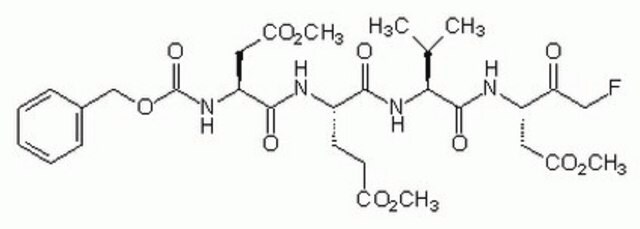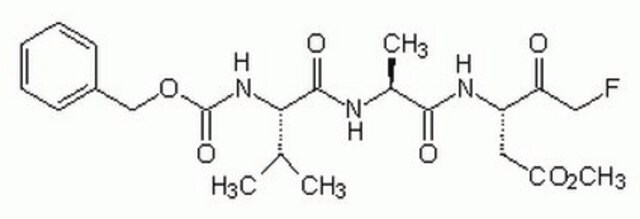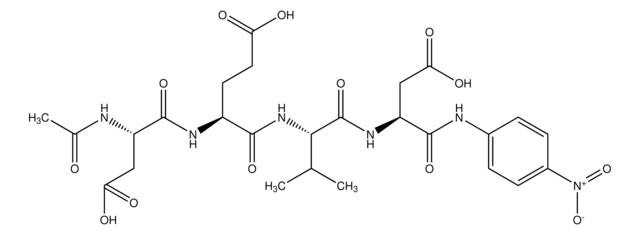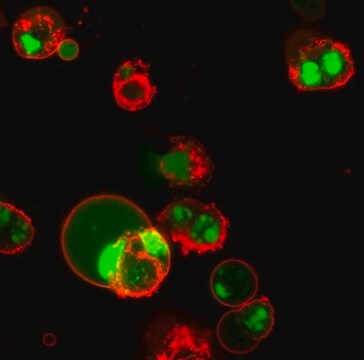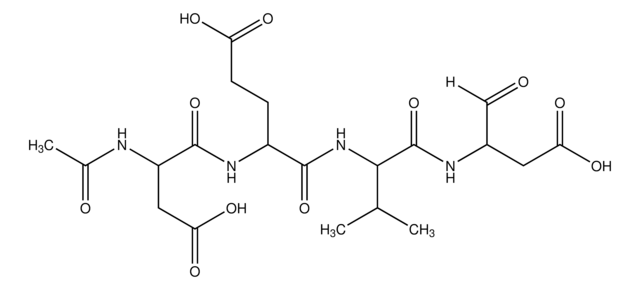235400
Caspase-3 Substrate I, Colorimetric
Colorimetric substrate for caspase-3 (Km = 9.7 µM) and related cysteine proteases.
Synonym(s):
Caspase-3 Substrate I, Colorimetric, Ac-DEVD- pNA, Ac-DEVD-pNA
About This Item
Recommended Products
Assay
≥95% (HPLC)
form
lyophilized
manufacturer/tradename
Calbiochem®
storage condition
OK to freeze
desiccated
protect from light
solubility
DMSO: 60 mg/mL
shipped in
ambient
storage temp.
−20°C
General description
Biochem/physiol Actions
Caspas-3
Warning
Sequence
Reconstitution
Other Notes
Thornberry, N.A., and Lazebnik, Y. 1998. Science 281, 1312.
Nicholson, D.W., et al. 1995. Nature376, 37.
Lazebnik, Y.A., et al. 1994. Nature371, 346.
Legal Information
Storage Class Code
11 - Combustible Solids
WGK
WGK 1
Flash Point(F)
Not applicable
Flash Point(C)
Not applicable
Regulatory Listings
Regulatory Listings are mainly provided for chemical products. Only limited information can be provided here for non-chemical products. No entry means none of the components are listed. It is the user’s obligation to ensure the safe and legal use of the product.
JAN Code
235400-5MG:
235400-MG:
Certificates of Analysis (COA)
Search for Certificates of Analysis (COA) by entering the products Lot/Batch Number. Lot and Batch Numbers can be found on a product’s label following the words ‘Lot’ or ‘Batch’.
Already Own This Product?
Find documentation for the products that you have recently purchased in the Document Library.
Our team of scientists has experience in all areas of research including Life Science, Material Science, Chemical Synthesis, Chromatography, Analytical and many others.
Contact Technical Service